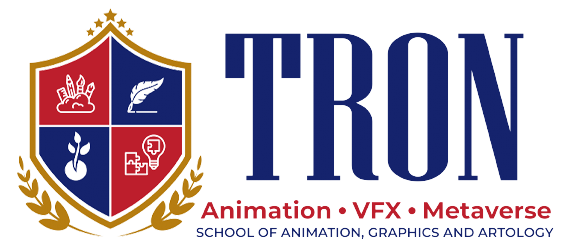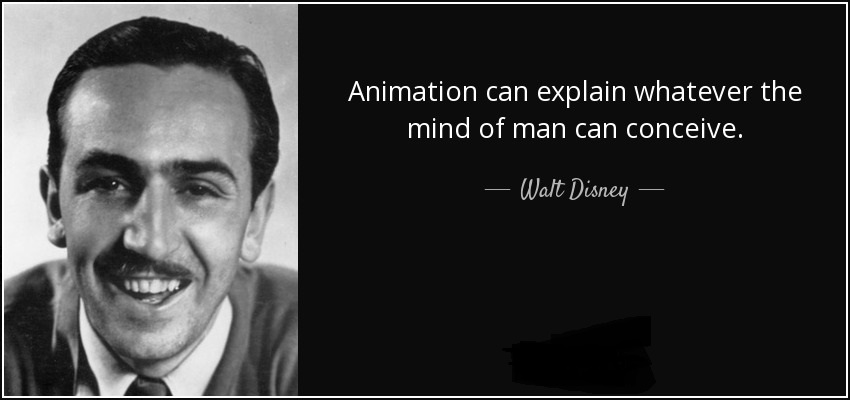Animation has made its way long from starting with simple 2-D sketches to 3-D animated entertainment videos and commercials.
12 Principles of Animation, developed by Disney Animators Ollie Johnston and Frank Thomas, is a guide to illustrate anime in such a way that its movements and characters match the real world. Knowing these principles is core to putting your feet in the world of animation.
The duo has developed the principles of animation for 2-D creations. However, the same concept also works for 3-D animations. In this blog, we have covered 12 Principles of Animation with examples for you published in “The Illusion of Life: Disney Animation” in 1983.
Squash and Stretch

This is the first principle from the list of animation principles to help you create realistic anime. Squash and Stretch refer to the concept through which animators examine how to animate the weight and volume of the object. It also describes how the object changes its shape when any force acts upon it.
To understand this principle, you can take an example of a bouncing ball that seems straight while falling and gets oval-shaped while touching the ground.
Anticipation

Anticipation deals with the action in animation. It makes the audience ready for the movements that are about to happen by showing small movements and proceeding to a larger one. It is one of the crucial principles of animation that brings realism to animation.
To understand this concept precisely, you can take an example of an anime character taking his feet back to kick the ball.
Staging

Staging is one of the most important concepts of animations to which the animators should pay special attention. Since it sets the scene. Here, animators decide what should capture the audience’s attention and be less prominent in the scene. Through this principle, animators learn the perfect combination of lighting, framing, and composition to tell the story without any distractions.
Such as placing the object by following the third rule of image or placing the object in the middle to capture viewers’ attention.
Straight Ahead Action and Pose-to-Pose

Straight Ahead Action and Pose-to-Pose are two different approaches to animating. Straight Ahead Action involves starting from the first frame and working sequentially, drawing each frame in succession. While, Pose-to-Pose, involves creating keyframes at important poses or moments and then filling in the in-between frames. The Straight Ahead Action technique is used for more spontaneous and fluid results in animation. The pose-to-Pose approach allows for more control over the timing and staging of the animation.
An example of this principle would be animating a character jumping. In Straight Ahead Action, the animator would draw each frame in sequence, capturing the character’s movement frame by frame, like going upward to downward. In Pose-to-Pose, the animator would create keyframes for the starting and landing poses and then fill the frames. Pose to Pose is a more methodological and modern approach.
Follow Through and Overlapping Action

These are also two approach-based principles which add depth and realism to the animation. Follow Through refers to continuing a character’s movement after the main action has stopped. To understand this animation technique, you can take an example of a character, who stops while running, but his hair or clothes still move for a short time due to momentum.
Overlapping action refers to the scene when the different parts of a character or object move at different rates or times to create a more natural and organic motion. Suppose an anime character is running; during this time, his arms, feet, clothes, hair, and even the background show the movement.
Slow In and Slow Out

This principle puts special emphasis on the idea of which objects in motion require time to accelerate and decelerate from one point to another. It gradually eases into or out of the action.
For example, when you accelerate a pendulum from a stationary position, it starts slowly and then gradually gains speed. Similarly, when it comes to a stop, it slows down progressively rather than abruptly halting.
Arcs

The Arcs principle of animation provides a natural touch to animation. As we all know, most objects and body parts in nature tend to move along curved paths rather than straight lines. Animating movements with arcs helps create smooth and natural-looking motion. Mastering this principle is important to design a professional animation.
For example, a character raises their arm following an arc rather than moving in a straight line.
Secondary Action

This principle is the icing on the cake. It signifies the additional movements and adds an extra dimension to the scene, supporting and enhancing the main action. They can be used to convey emotions, add detail, or provide context.
For instance, while a character walks, their secondary actions may include swinging their arms, bobbing their head, or even talking.
Timing

Timing is crucial; without it, you can’t get your animation well-designed. It refers to the number of frames or the speed at which actions occur. It determines the rhythm and pace of an animation, conveying the weight, force, and emotion of a movement.
For example, when a heavy-weight object is pushed in the animation, it doesn’t react quicker than an object with a lighter weight.
Exaggeration

Exaggeration is the principle that provides balance to the animation. It lets animation not be too real or look dull. It helps the animators make animations more expressive, entertaining, and engaging.
For example, in a comedic animation, a character’s facial expressions may be exaggerated to emphasize their emotions.
Solid Drawing

It’s one of the toughest principles to follow, especially in drawing or sketching. Solid Drawing is all about understanding the three-dimensional forms and volumes, even when working in a two-dimensional medium. It involves giving characters and objects a sense of weight, balance, and depth. By learning this technique, a skilled animator can create the illusion that the characters exist in a 3-D space.
For instance, drawing a 3-D box on a paper sheet.
Appeal

Last but not least, of the 12 principles of animation, Appeal deals with a character or design’s overall attractiveness, charisma, and likability. It involves creating visually appealing, relatable, and interesting characters to the audience. An appeal can be achieved through various means, such as appealing character designs, captivating personalities, and engaging performances.
An example of Appeal would be designing a cute little cat with glossy eyes and facial expressions.
Benefits of Knowing the 12 Principles of Animations
12 principles of animation are fundamental guidelines for creating appealing animations. Here are some of the benefits of knowing these principles:
- Understanding the principles of animation allows animators to create professional-looking animations.
- These animations enable animators to create animations that closely resemble real-life movements.
- Understanding these principles allows animators to communicate a character’s feelings effectively to the audience.
- These principles of animation help to develop more engaging and captivating anime.
- Knowing these principles of animation lets the animators experiment with the variations.
It offers animators basic guidelines of design that let them create high-quality, visually appealing, and engaging animations.
Conclusion
Understanding these 12 principles of animation and applying them while designing will help in bringing the best. So, it becomes important for animators to learn these principles precisely.
Torn Education, one of the renowned animation, and VFX institutes in Pune, offers well-structured courses in animation, VFXto make you learn animation and all of its concepts, including the 12 principles, more simply.
Know more about Tron.
FAQs Related to Principles of Animation
Why are the 12 Principles of Animation Helpful to Animators?
Developed by Disney Animators Ollie Johnston and Frank Thomas, the 12 principles of animation are crucial for animators. It helps animators understand and design anime characters that perfectly represent the storyline and, simultaneously, become capitative.
What are the 12 Principles of Animated Game?
Published in 1983, the book “The Illusion of Life: Disney Animation”, originally developed for 2-D animations, also works for 3-D animated commercials, series and games etc. You must learn these principles to become one of the best 3-D animators.
What are the 12 Types of Animation?
12 principles of animation book state Squash and Stretch, Anticipation, Staging, Straight Ahead Action and Pose-to-Pose, Follow Through and Overlapping Action, Slow In and Slow Out, Arcs, Secondary Action, Timing, Exaggeration, Solid Drawing, and Appeal 12 core principles of animation.
What is Staging 12 Principles of Animation?
Staging is one of the most crucial principles out of the 12 principles of animation, which helps animators to set the scene. Here animators deal with the placement of the characters, background and foreground elements, the character’s mood, and the angle intending to provide viewers with a clear perspective.
So, it’s important for the student dreaming of pursuing a career in animation to learn these basic principles of animation.

